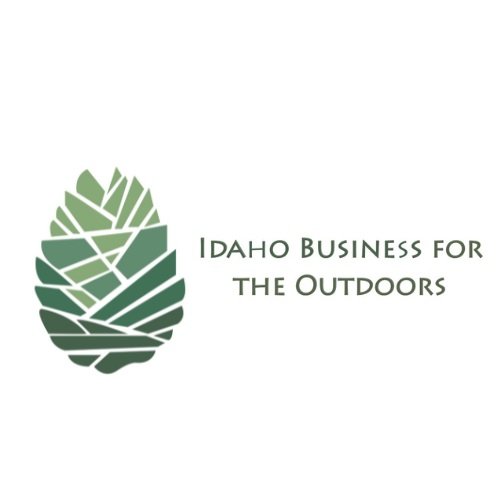sustaining fishable, swimmable, drinkable waterways
For Idahoans, our quality of life goes hand in hand with the quality of our water.
Photo Courtesy of: Idaho Business for the Outdoors
Fishable, swimmable, drinkable waterways is a vision we have sought as a nation ever since the passage of the Clean Water Act in 1979 (CWA). Today, our communities continue to work towards reaching the goals of the CWA to sustain healthy fisheries, recreation, public health and other industries that help maintain our clean and safe neighborhoods and lifestyles.
Too often, we take clean water, and the work of our wastewater treatment plants for granted. Municipal wastewater treatment plants play critical roles in protecting and maintaining our access to clean water. Unfortunately, according to the Idaho Conservation League’s third annual Idaho wastewater treatment plant performance evaluation, 87 municipal wastewater treatment plants, or 76%, have had one or more discharge violations. Idahoans rely on these treatment plants to keep our water clean and safe for us, our families, our pets and Idaho’s wildlife, but this report shows most of them are falling short. According to the report, over a three-year period between January 2016 and December 2018, 114 wastewater treatment plants were reviewed and added into the report, accruing a total of 1,732 discharge violations. These violations have a detrimental impact on aquatic life, livestock, animal and human health.
According to the U.S. Environmental Protection Agency (EPA) , to maintain control of polluters including wastewater treatment plants, the CWA prohibits anybody from discharging "pollutants" through a "point source" into a "water of the United States" unless they have an NPDES permit. In Idaho, the Idaho Department of Environmental Quality (DEQ) is in charge of issuing these permits, which they call Idaho Pollutant Discharge Elimination System (IPDES) permits. Since every wastewater treatment plant is different, discharge permits also differ from facility to facility. Each permit is developed using water quality data and other metrics to ensure protection of the health of the waterbody receiving treated sewage, the aquatic life in that waterbody, the health of people who recreate in the water, and the water supply of downstream communities.
These permits limit a variety of pollutants that can harm human health, fish and other aquatic life in the waterbody. For example, limits are required for E. coli, which comes from fecal contamination and can cause serious diseases, and phosphorus, which when in a waterbody acts as a fertilizer leading to harmful algal blooms, aquatic weed growth, and harmful oxygen levels for fisheries. These limits also cover a variety of pollutants, such as mercury, lead, copper, other toxic metals, chlorine and ammonia which harm fish and other aquatic life in the waterbody, and make it unsafe to fish, drink or swim.
The EPA maintains an online database of all current discharge permits and supporting documents issued in the state of Idaho, which can be found here. No municipality wants to be on the receiving end of a CWA enforcement case. Distressing financial burdens are not going to help ensure public access to fishable, swimmable, drinkable waterways in Idaho. In fact, expensive penalty fines, court fees, and further enforcement actions can develop into overbearing financial burdens within communities that bring harsh economic ripples into our neighborhoods.
Municipal wastewater treatment facilities have a responsibility to maintain fishable, swimmable, drinkable waterways for Idahoans, but that doesn’t mean the responsibility is theirs alone. The effects of wastewater mismanagement impact more than just a facilities bottom-line, it impacts our livelihoods. Although the public has seemed removed from this issue in the past, we should be doing a lot more to stabilize our local economies and sustain our clean water and public health. Idaho Business for the Outdoors hopes to tie community stakeholders together around the issue of clean water through leading a month-long journey in August to raise awareness and support water quality education and action along the Boise River. Christopher Swain, our event leader, will be telling the story of our water quality data and bringing its content to life. Please follow our events through social media and download the Boise River: Source to Snake app from our events page if you haven’t already done so.
The information provided by the Boise River: Source to Snake event will give our communities resources that can reveal effective steps towards sustaining fishable, swimmable, drinkable waterways; our work must continue past Swain’s finish-line. Rather than operating the status quo, we need to take a serious look at how we handle our wastewater on a local level. Municipal wastewater treatment plants need community incentives for meeting the standards that ensure clean water. Communities can provide additional help to their local municipal wastewater treatment plant by investing money into upgrades, or more importantly, implementing constructive water treatment options and upgrades, while looking at water crates and constructed wetlands that remove phosphorous as an option, as well as storm drain education and water quality awareness and advocacy.
More information:
Review the municipal wastewater treatment plant’s NPDES permit. These documents, as well as the fact sheets that provide greater detail and explain the permit conditions, can be accessed online here.
Visit the EPA’s Enforcement and Compliance History Online website to review the performance of your local facility here.
Read the Boise Weekly article “Idaho Water Treatment Plants are Down the Drain” by Harrison Berry, July 17, 2019 here.
Review the full annual Idaho wastewater treatment plant evaluation, which lists the treatment plants that have passed and failed, along with the reasons of failure, by the Idaho Conservation League here.
Review the IDEQ 2016 Integrated Report here.

